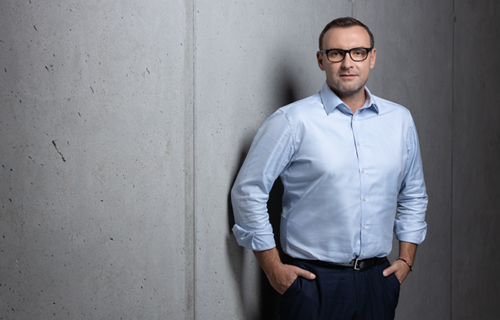Ecology and sustainable development play an increasingly important role in companies’ strategies. They are already taken into account by 6 out of 10 real estate investors, according to a CBRE study. In addition to environmental protection and a good image, the pro-ecological approach also increases the value of the property in many ways. Higher investments in sustainable solutions pay off in the form of greater interest in potential tenants, higher rents, better value retention and lower utility bills. However, there are more benefits.
“ESG factors are taken into account throughout the property lifecycle, in due diligence, property purchase, lease, and asset management. As a result, modern, certified and greener buildings represent a higher value for investors, owners and tenants. They are more resistant to crises, rapid changes in the market or introduced environmental regulations. They better maintain their value and return on investment, which is particularly important nowadays, when, among others, energy prices. And at the same time, they allow for ongoing savings,” says Paweł Kotlarski, director in the property management department at CBRE, responsible for supporting companies in implementing ESG strategies.
TOP1. Zero emissions and energy saving:
A property that meets the requirements of low-emissivity and energy efficiency allows you to save on bills, which is crucial, especially in the context of rising media prices. In addition, more and more companies aim to achieve zero emissions in their strategies in the coming years. For example, among warehouse tenants it is already 78 percent. – indicate CBRE data. While the implementation of energy-saving solutions in modern offices and warehouses is already relatively advanced, well-lit and energy-consuming shopping centers require new solutions. An example of effective operation is the City Square Mall in Singapore, where special air conditioning systems help maintain the right temperature in the facility and reduce carbon dioxide emissions by more than 4,000. tons per year. In turn, the automatic lighting of stairs and parking lots saves over 50 thousand. kilowatt hours of electricity per year.
TOP2. Higher value:
Green buildings earn higher rents than comparable uncertified properties. They allow you to attract tenants who are willing to pay more for high environmental standards. In the United States, rents for space in LEED-certified office buildings are down 5.6 percent. higher than in buildings without this certificate. The advantages for investors are therefore clear – green buildings generate higher rents and higher capital values while exhibiting lower monthly building operating and maintenance costs. Therefore, according to the CBRE report “Global Investor Intentions Survey 2021”, already 6 out of 10 investors include ESG factors in their strategies.
TOP3. One step ahead of regulations:
Over the last decade, the number of regulations promoting ESG has increased significantly. The regulations are becoming more and more restrictive and impose higher requirements in the context of the Sustainable Development Goals. Soon they will have an increasing influence on the real estate market. For example, the European Union regulations, which will come into force in part as early as 2022, are intended to direct the stream of financial investments towards projects that contribute to mitigating the effects of climate change. The Paris Agreement signed by 196 countries, including Poland, is also designed to reduce EU emissions by at least 55 percent by 2030. compared to 1990 levels. It should also be expected that banks will increasingly prefer this type of investments and are more willing to lend them. In addition, the practices currently applied in modern buildings in developed markets allow to avoid the need for modernization due to accelerating changes in the law and to maintain a stable situation of the facility on the market.
TOP4. Greater resistance to crises:
In a global context, the application of ESG principles to the real estate industry increases the effectiveness and resilience of risk and cost management strategies in crisis situations such as pandemics or extreme weather events. For example, energy efficiency makes sustainable buildings more desirable when there is economic uncertainty or high inflation and companies seeking savings. In turn, extreme heat increases the demand for air conditioning systems and the frequency of their use, which is associated with an increase in energy costs, which green commercial facilities allow to reduce.
“The principles of sustainable development have an increasing impact on the effectiveness of real estate investments. For this reason, investors and developers who would like to maintain their position on the market should keep their finger on the pulse by observing and implementing emerging solutions,” summarizes Paweł Kotlarski.
Source: CBRE
